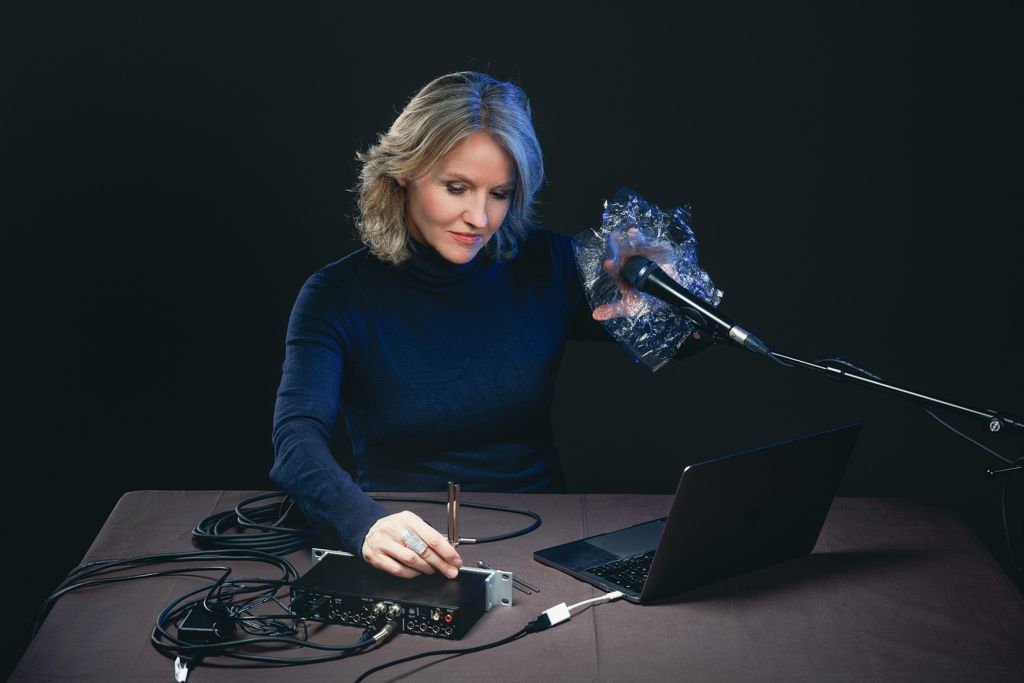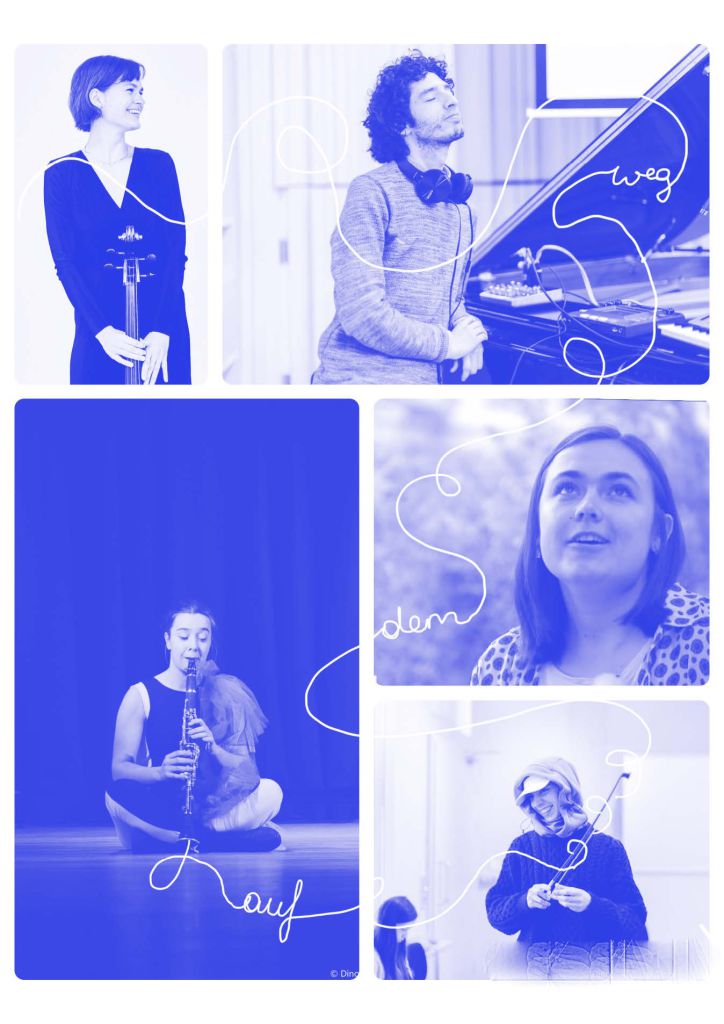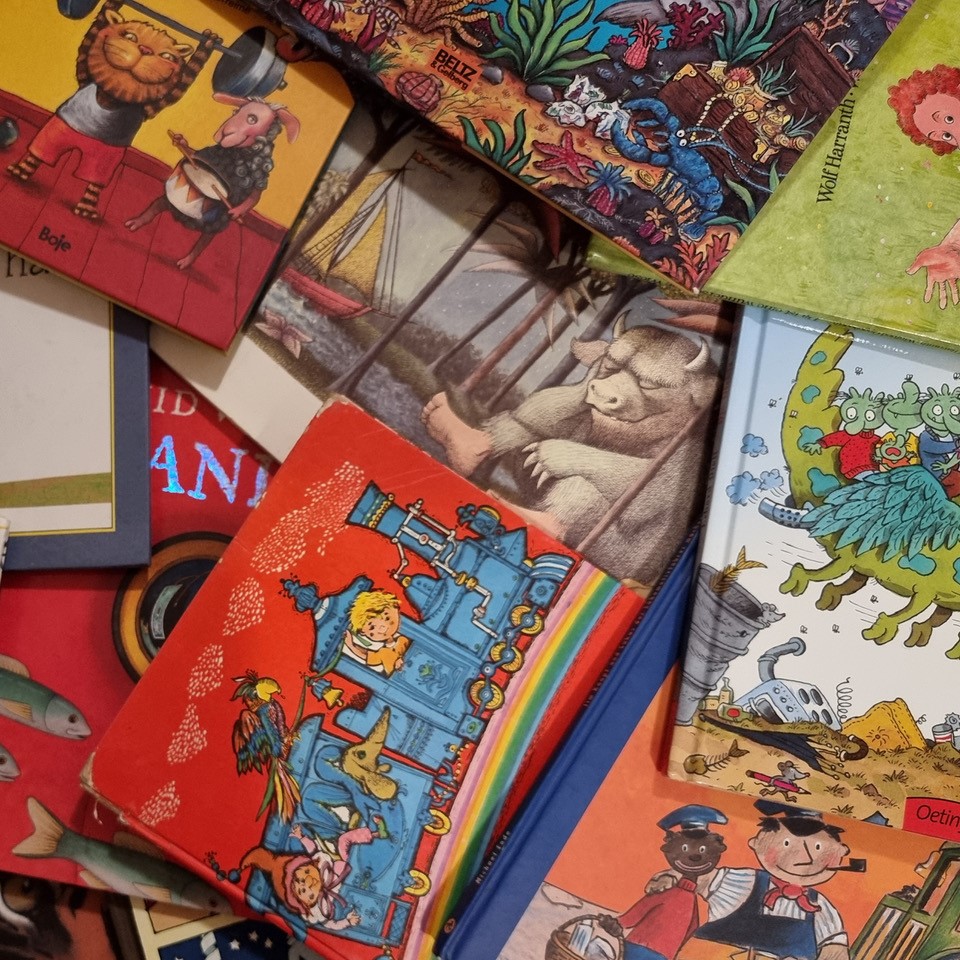Creativity. It’s a word that people pretty much automatically associate with artists. It’s also the driving force whenever the point is to find new paths by which to proceed. But what’s the actual meaning of this term, which comes from the Latin word “creare”? It has to do with bringing forth, giving birth to, or producing something. Which is to say: creativity is a trait that can be learned and doesn’t care about age, as numerous workshops of the festival KlangBildKlang aimed at children, adolescents, and entire families will prove. The creative and innovative approaches in play here will overcome barriers and open up paths of approach that enable music to be experienced in a lively and inspiring way.
The project Operallusion [Opera-lusion] for Minis & Parents is set to sweep young participants into a world of opera and illusions. Its innovative combination of music, technology, and interactive elements invites children and their parents to partake in a journey full of imaginings and discovery. Front and centre here will be not only the experience of music as such but also an opportunity for participants to take creative action. “I think it’s always exciting to be allowed into spaces where you can encounter art close-up. It’s powerful to be enriched in that way,” says initiator Martina Claussen in description of the underlying concept.

With her project, she seeks to provide not only children but also accompanying adults with an immersive musical experience while also giving rise to emotional connections. Music is to be experienced here not just acoustically but also through the senses of sight and touch. The sounds, though, will be particularly interesting: “I generate some digitally and capture others as recordings. Students will record individual sung passages prior to the workshop and then be heard there together with themselves as duets,” describes the musician. While this is a case where the point is for individuals to discover sounds for themselves, music mediation can also give rise to community—as Axel Petri-Preis will prove with his students in their project Auf dem Weg [On the way].

Inspired by the idea of addressing lostness, he joined forces with students to develop a unique concept for a strolling concert in the 10th district’s Sonnwendviertel neighbourhood. “Cape 10 is a house of encounters. It includes a day centre for unhoused women as well as an outpatient clinic for people who lack social insurance. The people who run these institutions recognised quite early on how cultural participation is an integral component of human well-being,” says Petri-Preis. Through various artistic interventions, the group intends to give participants an opportunity to engage with “Pathfinding” as a theme and have new experiences while doing so. “Prior to the project itself, we’ll be putting on pop-up concerts in the Sonnwendviertel that will call attention to the upcoming events.” June will then see the audience itself become part of the performance: “It will be an opportunity for interaction and participation. You’ll be able to be in the midst of the sound or move within the sound,” is how music mediator Petri-Preis describes this event. What’s more, participants will receive a map that shows all stations of the project. “That will enable them to decide what paths they’ll take,” Petri-Preis explains.
A creative avenue for music mediation is likewise demonstrated by the project Klangbilder – Bewegtes Musiktheater [Sonic Images – Moving Music Theatre], led by Christina Kanitz-Pock and Werner Rohrer. Together with students, the two will be combining music, images, and motion to generate a holistic artistic experience for children. By dealing creatively with music and visual elements, their participants will be stimulated to discover and develop their own forms of expression. The individual experience of every child is central here, with collaboration and dialogue between the various artistic disciplines very much encouraged. “The idea is to use the musical work Pictures at an Exhibition by Modest Mussorgsky and the corresponding pictures and/or picture titles as an impulse for the children to create works of their own by composing, making music, and moving. Before or after the music-making workshop, we’ll visit an orchestra rehearsal—and the family concert on the following day can be attended by the participants on their own,” explains Christina Kanitz-Pock. “In general,” adds Werner Rohrer, “our classes and our workshop seek to catalyse dialogue between the arts and connections between different art forms.”

The concluding project Klingende Bilder [Singing What We See] will then show how music and picture books can be used in combination as an innovative way of encouraging children’s creative musical development. This connection of pictures and sounds will encourage children to tell their own stories and allow the power of their imaginations to unfold. “In every image, there’s also a sound—or one associates a sound with an image. We want to find these sounds and also find songs for such sounds-in-images that we can sing using our own voices. When I go through the city, every situation I encounter will evoke some song to go with it. For example, I know one song that I associate with a tram: when I see the O-tram, I think of an ABC-song. So to conclude the workshop, we’ll have the kids search for songs in their own surroundings, too,” explains Amira El-Hamalawi, this project’s initiator. Her students will join each child in choosing a song for the picture they’ve brought along and then sing it with them. “After the workshop, all of the participants will go home with notated versions of their songs so that they can ideally sing them to their parents and talk with them about music.”
The projects featured here demonstrate the variety of possible approaches to harnessing creativity such that young people interact with music in a way that’s innovative and inspiring. They show that music can not only be heard but also experienced, felt, and shaped—in the process enriching lives and encouraging creative development at any age.

